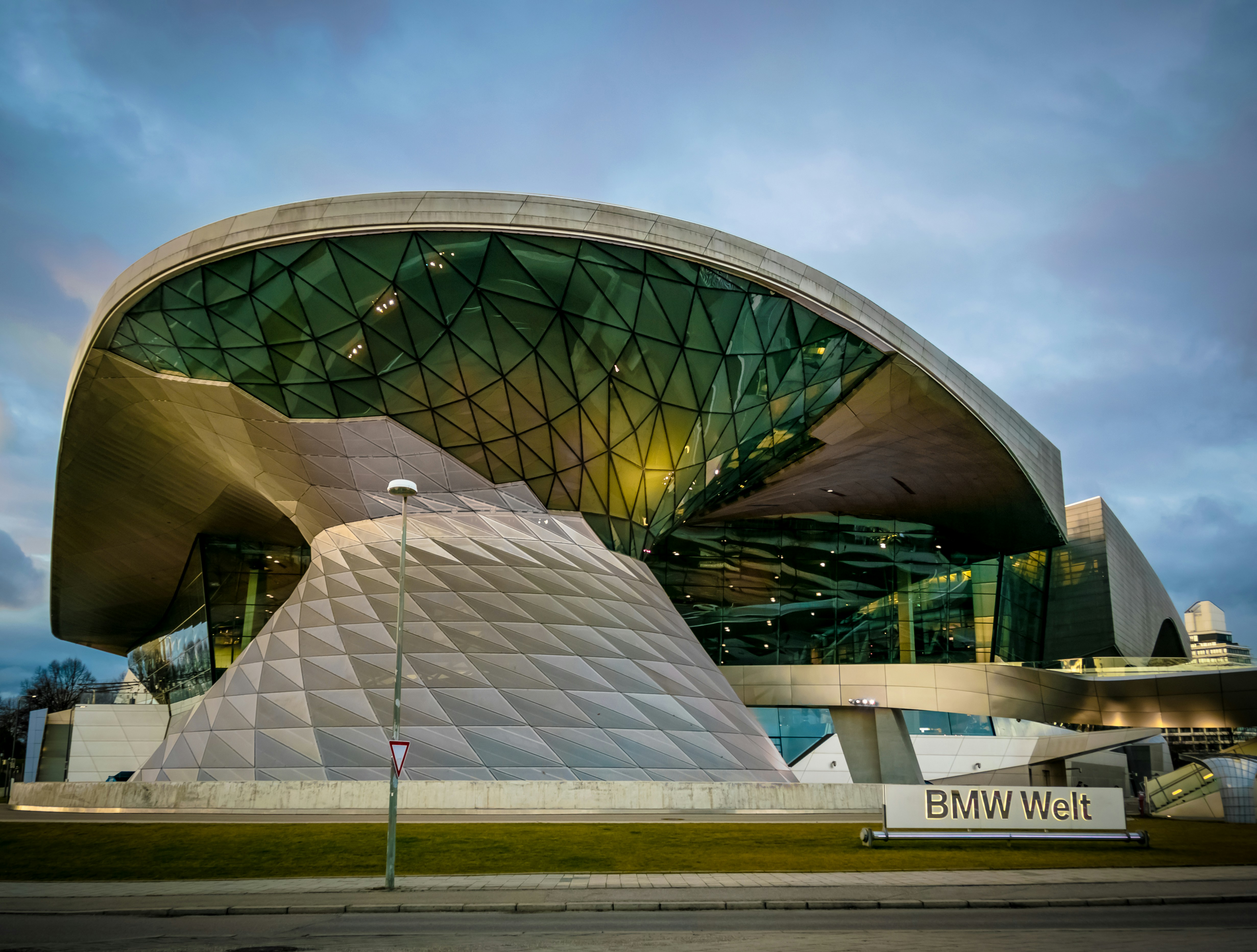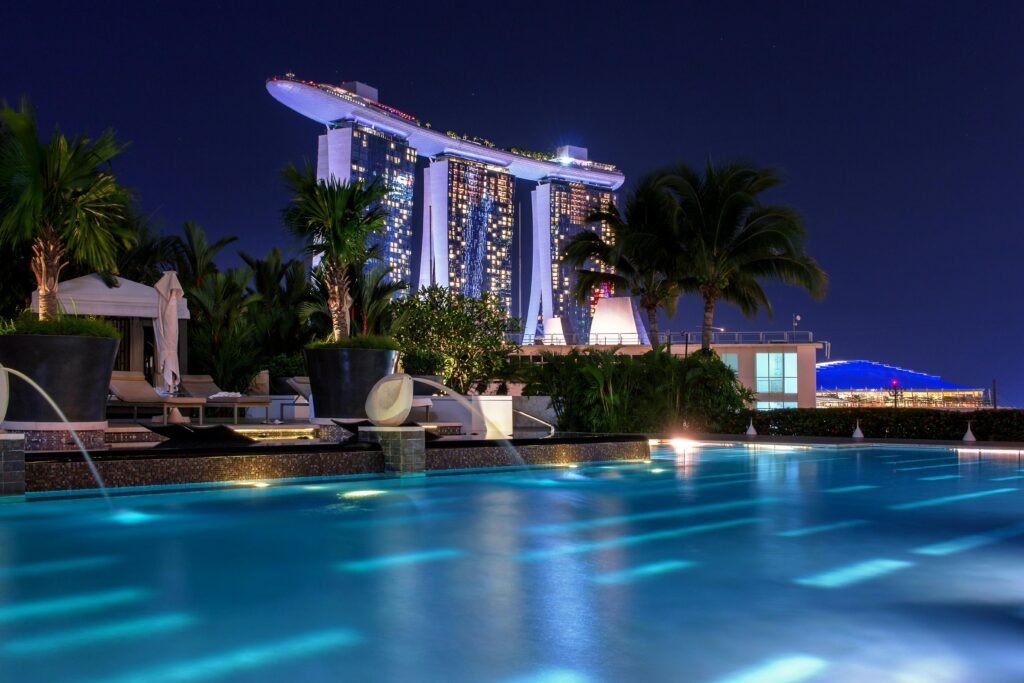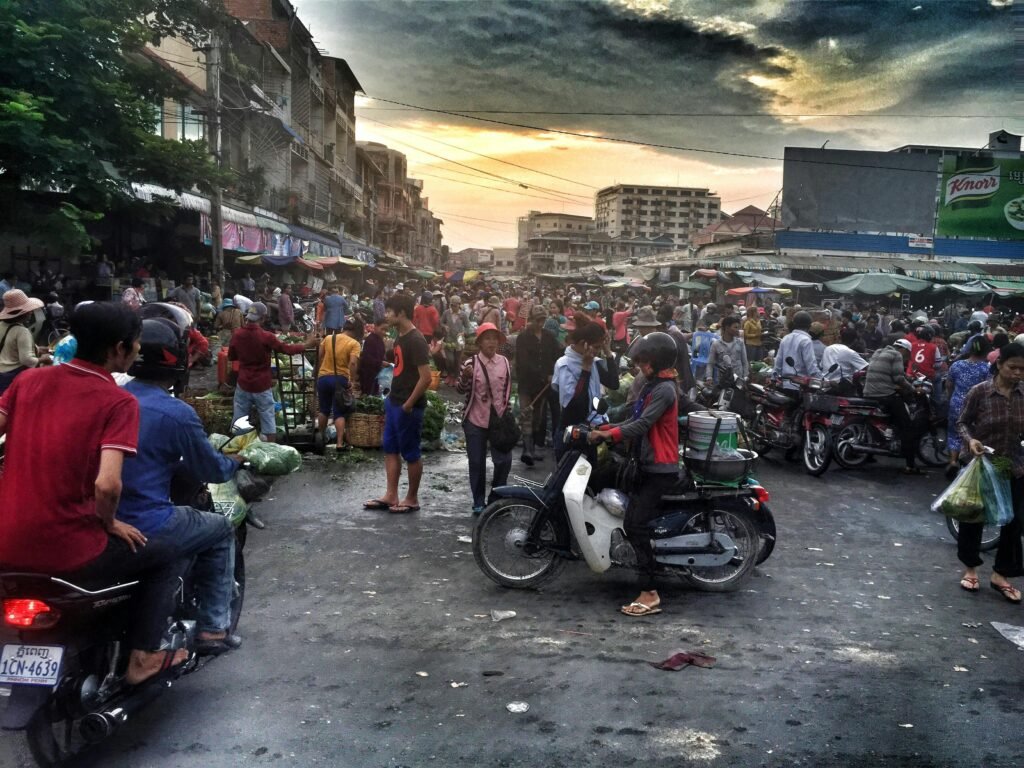Introduction to Asia’s Futuristic Landscape

Asia is experiencing a remarkable transformation, with several cities emerging as frontrunners in the race toward futurism in urban development. These urban environments embody a unique blend of tradition and modernity, where ancient cultural heritage coexists seamlessly with cutting-edge technology and innovative design. This coexistence not only reflects the historical richness of the continent but also represents a forward-looking approach that many nations are adopting to address contemporary challenges.
Futuristic cities in Asia are characterized by their distinct architectural styles, which often incorporate sustainable practices and smart technologies. Cities like Singapore, with its iconic skyline adorned by the Marina Bay Sands and Gardens by the Bay, exemplify how innovative design can harmoniously integrate with nature. Similarly, Seoul boasts advanced public transportation systems and smart city initiatives that enhance urban living, proving that modernization does not have to come at the expense of functionality or sustainability.
Moreover, Tokyo stands as a testament to the seamless merging of old and new. Its bustling streets are lined with traditional shrines and modern skyscrapers, showcasing the city’s commitment to preserving its rich history while embracing new advancements. The concept of a futuristic city extends beyond mere aesthetics; it encompasses a holistic approach to urban planning that prioritizes efficiency, connectivity, and quality of life for residents.
As we dive deeper into the realm of Asia’s futuristic cities, it is essential to recognize their role as beacons of innovation and progress in an ever-evolving world. These urban centers are not just redefining what it means to be ‘futuristic’ but are also setting benchmarks for global cities striving to achieve similar transformations.
Singapore: A City in a Garden
Singapore exemplifies how modern urban planning can harmonize with nature to create a sustainable living environment. Renowned for its innovative approach, the city-state has successfully integrated extensive green architecture into its urban landscape, making it a model for future cities worldwide. A standout feature is the iconic Gardens by the Bay, an extraordinary horticultural oasis that showcases an innovative use of technology and nature. The Supertree Grove, with its towering vertical gardens, serves not only as a stunning visual landmark but also functions as an environmental sustainability mechanism, collecting solar energy and capturing rainwater.
Furthermore, Marina Bay Sands stands as a symbol of luxury and modernity. This architectural marvel features a rooftop garden that offers breathtaking views of the city skyline, while also incorporating sustainable practices such as efficient energy use and water conservation. The seamless design allows visitors to enjoy nature without departing from the comforts of an urban environment, emphasizing Singapore’s commitment to maintaining a balance between high-tech amenities and ecological preservation.
In Singapore, the approach to urbanism is fueled by the belief that green spaces are essential for enhancing the quality of life. The city-state’s commitment to creating a “City in a Garden” philosophy can be observed through initiatives that promote nature conservation and urban greenery. Parks, green roofs, and vertical gardens are integrated throughout the urban area, significantly reducing the urban heat island effect and improving air quality. This innovative blending of urban elements with natural landscapes illustrates that sustainable development and advanced urban planning can coexist in a city, making Singapore a leading example of a futuristic metropolis that values harmony with nature.

Seoul: The Technological Heart of Asia
Seoul, South Korea’s capital, stands at the forefront of technological advancement and digital innovation, cementing its status as a leader in Asia’s urban landscape. With a population exceeding 10 million, the city has embraced technology to enhance the quality of urban life through a series of ambitious smart city initiatives. These initiatives encompass a range of advancements, from the deployment of 5G technology to the development of innovative urban mobility solutions, illustrating Seoul’s commitment to integrating digital infrastructure into everyday life.
The introduction of 5G technology has transformed Seoul into a hyper-connected metropolis where high-speed internet is the norm rather than the exception. This cutting-edge connectivity facilitates real-time access to information and services, significantly improving the efficiency of daily activities. Residents benefit from enhanced public services, including smart traffic management systems that optimize road use and reduce congestion, reflecting the city’s proactive approach to urban challenges.
Additionally, Seoul’s transit systems are a prime example of how technology can enhance urban mobility. The city has invested in intelligent transportation systems that not only streamline operations but also prioritize sustainability. Initiatives such as bike-sharing programs and electric vehicle charging stations have been implemented to promote eco-friendly transportation options, thus contributing to a cleaner urban environment.
Beyond infrastructure and transportation, the societal impacts of these technological advancements are profound. Daily life in Seoul has been noticeably improved through seamless connectivity, enabling residents to access information, services, and communication platforms instantly. Citizens enjoy enhanced convenience and quality of life, positioning Seoul as a pioneering model for smart cities globally. As other cities observe Seoul’s trajectory, it serves as a benchmark for what is possible when technology and urban planning converge harmoniously.
Tokyo: Where Tradition Meets Innovation
Tokyo stands as a remarkable exemplification of where ancient traditions harmoniously converge with modern innovations. This bustling metropolis, Japan’s capital, is often celebrated for its stark contrasts and its ability to seamlessly blend the essence of the past with the allure of the future. Culturally rich and technologically forward, Tokyo presents a unique urban identity that attracts millions of visitors annually.
One of the city’s most iconic landmarks is the Tokyo Skytree, a towering structure that symbolizes the city’s futuristic architectural prowess. Completed in 2012, this iconic broadcast tower reaches a height of 634 meters, making it the tallest structure in Japan. The Skytree offers breathtaking panoramic views of the metropolis, showcasing both the sprawling urban landscape and the hidden mountains beyond. Visitors can enjoy its observation decks, which provide a stunning context for the city’s commitment to innovation and design.
In contrast, the historical district of Asakusa embodies Tokyo’s rich cultural heritage. Home to the famous Senso-ji Temple, Japan’s oldest temple, Asakusa attracts tourists who wish to experience traditional Shinto and Buddhist practices amidst the pulsating energy of modern city life. The streets lined with shops selling artisanal crafts and traditional snacks, such as ningyo-yaki and dorayaki, echo the vibrancy of Tokyo’s history.
The fusion of old and new is further exemplified in Tokyo’s transportation system. The city boasts one of the most advanced and efficient public transport networks in the world, combining high-speed trains like the Shinkansen with intricate subway systems. This efficiency not only makes the city accessible but also reflects Tokyo’s commitment to fostering innovation while preserving cultural touchstones.
Ultimately, Tokyo’s distinct blend of tradition and innovation creates an urban environment unlike any other, where the past is respected and the future is embraced, offering a unique experience for both residents and visitors.
Architectural Wonders of Modern Asia
The architectural landscape of Asia’s futuristic cities serves as a testament to human ingenuity and creativity. These urban environments showcase a harmonious blend of innovative design, state-of-the-art technology, and sustainable practices, creating a unique skyline that reflects the aspirations of modern society. Prominent examples include the iconic Marina Bay Sands in Singapore, which boasts a striking three-tower structure connected by a distinctive sky park, offering visitors breathtaking views of the city below. The design embodies both luxury and functionality, emphasizing the importance of integrating leisure spaces within urban contexts.

Similarly, the Guangzhou Opera House in China is an exemplary representation of contemporary architecture. Designed by renowned architect Zaha Hadid, the building challenges traditional architectural norms with its fluid form and organic lines, evoking a sense of dynamism. Its significance extends beyond aesthetics; it serves as a cultural hub, fostering artistic expression and community engagement. This emphasis on multifunctional spaces is a recurring theme in many of Asia’s architectural masterpieces, highlighting how design can positively influence urban life.
The role of architects and designers in shaping these landscapes cannot be overstated. Groundbreaking visions by architects such as I.M. Pei and Kengo Kuma have redefined the urban experience, prioritizing sustainability, environmental impact, and cultural identity. Their innovative approaches have spurred a broader conversation around the necessity for cities to evolve in harmony with nature, accommodating increasing populations while minimizing ecological footprints. As cities like Tokyo and Shenzhen continue to push the boundaries of architectural innovation, they affirm the critical role modern design plays in reflecting the values and aspirations of their societies.
Sustainable Practices in Urban Development
In the face of rapid urbanization, cities in Asia are increasingly recognizing the importance of sustainability in urban development. Singapore, with its commitment to transforming itself into a “City in a Garden,” serves as a prime example. The city-state has integrated greenery into its urban planning by incorporating vertical gardens and green roofs. Such innovations not only enhance the aesthetic appeal of the city but also contribute to biodiversity, provide shade, and improve air quality. Furthermore, Singapore has implemented a robust waste management system aimed at achieving zero waste by promoting recycling and composting programs.
Seoul is another notable example of sustainable urban transformation. The city has introduced various initiatives to promote energy efficiency and reduce greenhouse gas emissions. Seoul’s Smart City initiative incorporates cutting-edge technologies that monitor urban infrastructure and services, allowing for efficient resource allocation. Moreover, the adoption of renewable energy sources, such as solar panels and wind turbines, has been prioritized to decrease reliance on fossil fuels. Through extensive public transportation networks, the city also encourages residents to opt for sustainable modes of commuting, thereby alleviating traffic congestion and minimizing carbon emissions.
Tokyo exemplifies the integration of sustainable practices with its focus on disaster resilience and energy efficiency. The city has invested heavily in green technologies, such as smart grids and energy-efficient buildings, to ensure that urban development does not compromise environmental integrity. Moreover, Tokyo’s extensive waste segregation and recycling programs aim to reduce landfill waste significantly. By involving the community in initiatives like “Mottainai,” which promotes the philosophy of minimizing waste, the city fosters a culture of sustainability among its residents. Overall, these advancements in sustainable urban practices reflect the commitment of Asian cities to improve their environmental footprint while enhancing the overall quality of urban living.
Transportation Innovations: The Future of Mobility

As cities across Asia embrace rapid urbanization, transportation innovations have emerged as pivotal solutions for enhancing mobility and addressing the challenges posed by congestion and pollution. The integration of advanced technologies into public transport systems is redefining urban living, with an array of groundbreaking initiatives designed to foster efficiency and sustainability.
One of the most promising advancements in transportation is the hyperloop system, a high-speed transit concept that propels pods through low-pressure tubes. This revolutionary mode of transport could reduce travel times between major urban centers significantly, thereby alleviating road congestion and diminishing carbon emissions. Cities such as Singapore and Dubai are currently exploring hyperloop feasibility studies, aiming to establish a model for future transit systems worldwide.
In conjunction with hyperloop technology, the prevalence of autonomous vehicles is reshaping the landscape of urban transportation. Self-driving cars are being piloted in several cities, offering a glimpse into a future where ridesharing and personal mobility are revolutionized. These vehicles utilize sophisticated sensor technologies and artificial intelligence to navigate city streets safely, which could lead to decreased traffic accidents and heightened efficiencies in vehicle usage. Moreover, as the infrastructure to support these vehicles develops, accessibility for individuals with mobility impairments will also enhance significantly.
Furthermore, many cities have adopted integrated public transit options that combine various modes of transport, such as buses, trains, and ferries, into unified systems. This connectivity facilitates seamless transfers for commuters, improving ease of access and reducing reliance on personal vehicles. Noteworthy examples include Tokyo’s vast rail network and Seoul’s extensive subway system, both of which exemplify how an interconnected approach can positively impact urban mobility.
As Asia’s futuristic cities continue to explore and implement these transportation innovations, the future of urban mobility promises to be more efficient, environmentally friendly, and technology-driven, ultimately creating a better living environment for all residents.
Cultural Influence on Modern Design
The interplay between culture and modern architecture is a critical aspect of urban development in cities like Tokyo and Seoul. These dynamic metropolises are not only characterized by their cutting-edge technologies and futuristic designs; they also reflect deep-rooted cultural identities. The architectural landscape in these cities harmoniously blends historical elements with contemporary styles, illustrating how traditions continue to shape the modern urban environment.
In Tokyo, for instance, one can observe the co-existence of ancient shrines and modern skyscrapers. The design philosophy often involves incorporating traditional elements, such as wooden structures and aesthetic considerations inspired by nature, into sleek modern frameworks. This respect for the past creates a unique urban tapestry that resonates with local inhabitants while attracting tourists eager to experience the juxtaposition of old and new. Additionally, the integration of communal spaces in modern architecture supports social interaction, echoing the traditional Japanese value of community.
Similarly, Seoul’s urban design showcases a dedication to preserving cultural heritage amid rapid modernization. The city’s planning often includes the restoration of historical sites within new developments, thereby maintaining a link with the past while encouraging innovation. Notable projects, such as the Dongdaemun Design Plaza, reflect a futuristic vision while paying tribute to the city’s rich history. The incorporation of traditional patterns and materials connects new structures to their cultural origins, fostering a sense of belonging among residents.
Ultimately, the synthesis of cultural elements with modern architecture not only enriches the aesthetic appeal of cities like Tokyo and Seoul but also reinforces their unique identities. These urban spaces, shaped by historical influences, create an engaging atmosphere that resonates with both residents and visitors alike, ensuring that the essence of the culture thrives amidst the rapid pace of modern development.
Challenges Facing Futuristic Cities
As Asia continues to emerge as a leader in urban innovation and modernization, futuristic cities are not without their challenges. One prominent issue is population density. Cities like Tokyo, Shanghai, and Mumbai are among the most densely populated in the world, presenting significant strains on infrastructure and services. High population densities can lead to increased traffic congestion, inadequate public transportation, and diminished quality of life for residents. As such, local governments are challenged to implement effective urban planning strategies that alleviate these pressures while maintaining residents’ needs.
Housing affordability is another critical concern. Rapid urbanization in many Asian cities has driven up housing prices, making it increasingly difficult for average citizens to secure affordable accommodation. In response, governments are exploring various solutions, including the construction of affordable housing units, incentivizing developers to engage in community-friendly projects, and revising zoning laws to allow for mixed-use developments. These innovative strategies aim to ensure that urban growth benefits all socio-economic groups and prevents the emergence of sprawling informal settlements.
Environmental issues also play a pivotal role in the challenges faced by these futuristic cities. Air pollution, waste management, and water quality are pressing problems resulting from rapid industrialization and urbanization. Local authorities are taking steps to mitigate these challenges through various initiatives, such as investing in green technologies, promoting public transportation, and increasing green spaces. Moreover, innovative solutions such as smart waste management systems and air quality monitoring are being implemented to foster sustainable urban living. By prioritizing environmental sustainability, these cities hope to become models of urban development that balance modernity with ecological responsibility.
